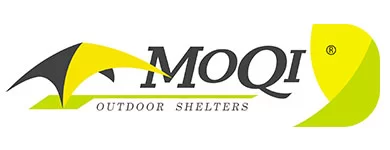If you’ve ever walked through a local market, outdoor festival, or trade show, you’ve probably seen rows of open-sided, peaked-roof shelters standing proudly under the sun. These are called canopy tents — a favorite tool for vendors, businesses, and event organizers who need quick, practical, and visually impactful shelter solutions.
Definition of a Canopy Tent
A canopy tent, often called a pop-up canopy or commercial shelter, is a portable structure made of a collapsible metal frame and a fabric roof. Designed to provide shade and limited weather protection, its key strength lies in how quickly it can be assembled, disassembled, and customized.

Canopy Tent vs. Traditional Tent: What’s the Difference?
While traditional tents are more enclosed and often used for overnight camping, sun shade canopy structures are open-sided and optimized for short-term outdoor events. Let’s compare the two:
- Structure: Canopy tents have four-legged frames with a peaked roof. Traditional tents include full enclosures, center poles, and mesh or canvas walls.
- Purpose: Canopy tents are best for day-use shelter, business booths, and crowd gathering. Traditional tents are used for sleeping or longer outdoor stays.
- Setup: Canopy tents are quick and easy to set up (often under 5 minutes). Traditional tents typically require more effort and time.
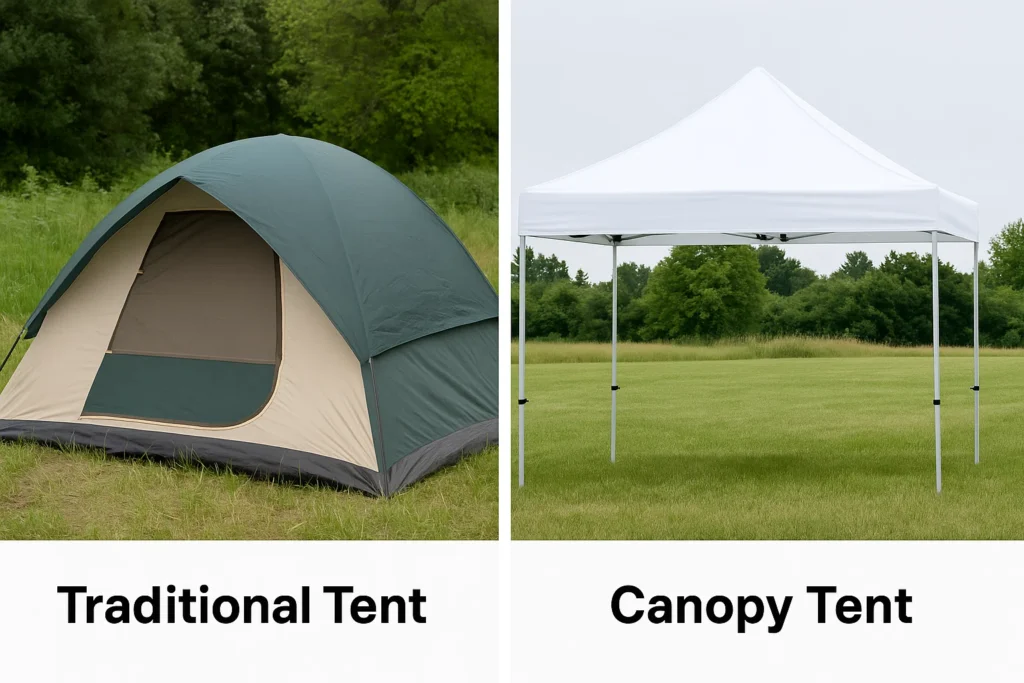
Key Features of a Canopy Tent
- Portability: Lightweight frames (usually aluminum or steel) make them easy to transport in bags or cases.
- Weather Protection: Ideal for sun and light rain. Not suitable for extreme wind or heavy downpours without anchors or sidewalls.
- Custom Branding: Add logos, taglines, colors — turning your sun shade canopy into a powerful advertising tool.
- Ease of Assembly: Most can be set up by 1–2 people, even with no previous experience.
- Cost-Effective: A one-time investment that boosts visibility at every event.

Why People Love Canopy Tents
It’s not just about function—it’s about freedom. A canopy tent gives small businesses and casual users alike the ability to set up a recognizable, shaded space in a matter of minutes.
Whether you’re at a weekend flea market or a national expo, it makes you look professional, organized, and approachable.
Parents use them at sports fields. Creatives set them up at art fairs. Entrepreneurs use them as pop-up shops. They help people build community under cover—literally.
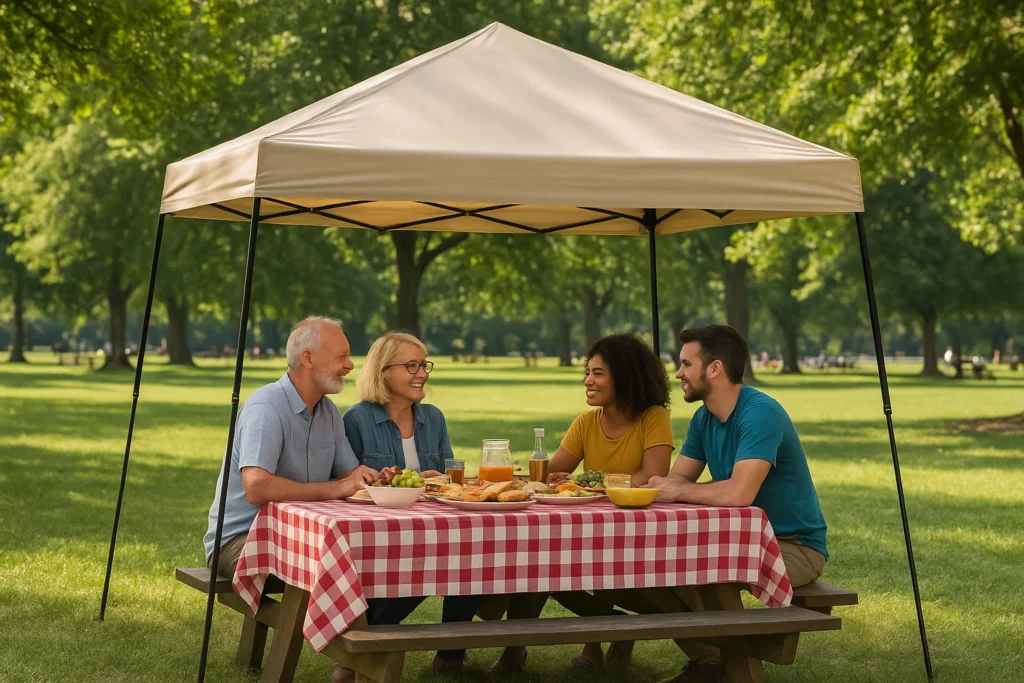
Advanced Tips for Using Canopy Tents
- On Concrete: Use heavy-duty weight bags on each leg. Avoid scratching the surface with unprotected metal feet.
- In Windy Conditions: Anchor guy lines at a 45° angle. Choose models with vented roofs to reduce lift.
- In Rain: Check roof slope to avoid pooling. Always use waterproof fabric. Consider adding sidewalls to direct runoff.
- At Night: Use clip-on LED lights inside the frame. String lights can also add ambiance for evening events.
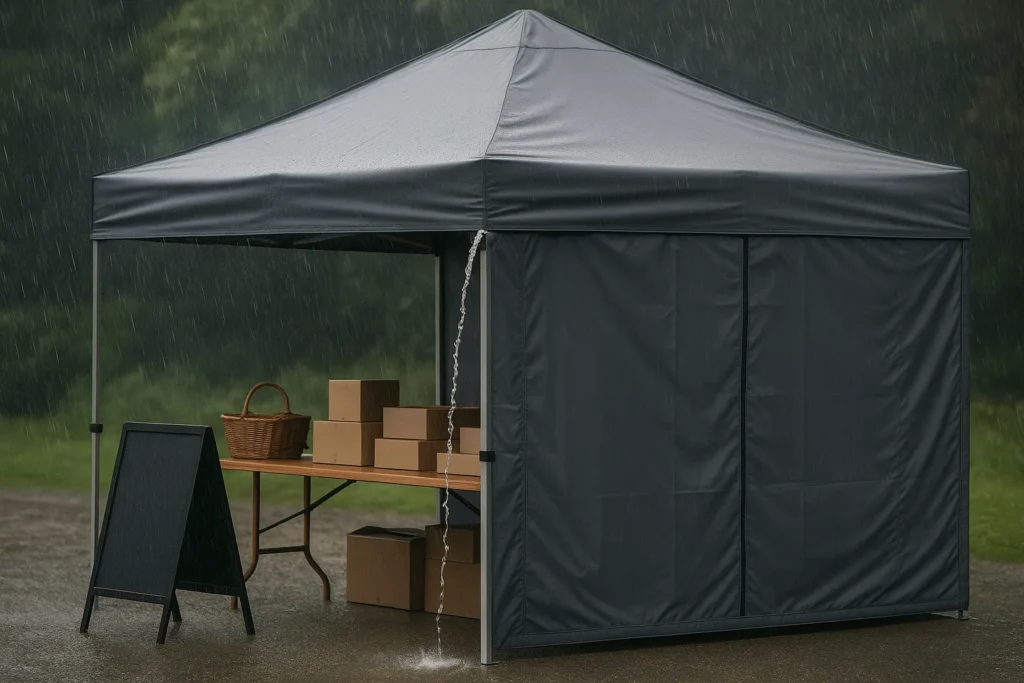
Where Are Canopy Tents Used?
- Trade Shows and Conventions: Indoors or outdoors, these tents create dedicated brand spaces.
- Farmers Markets: Protect products while drawing attention.
- Festivals and Parties: Provide shade and structure in open spaces.
- Sports Events and Beach Days: Easy, quick shelter for teams or families.
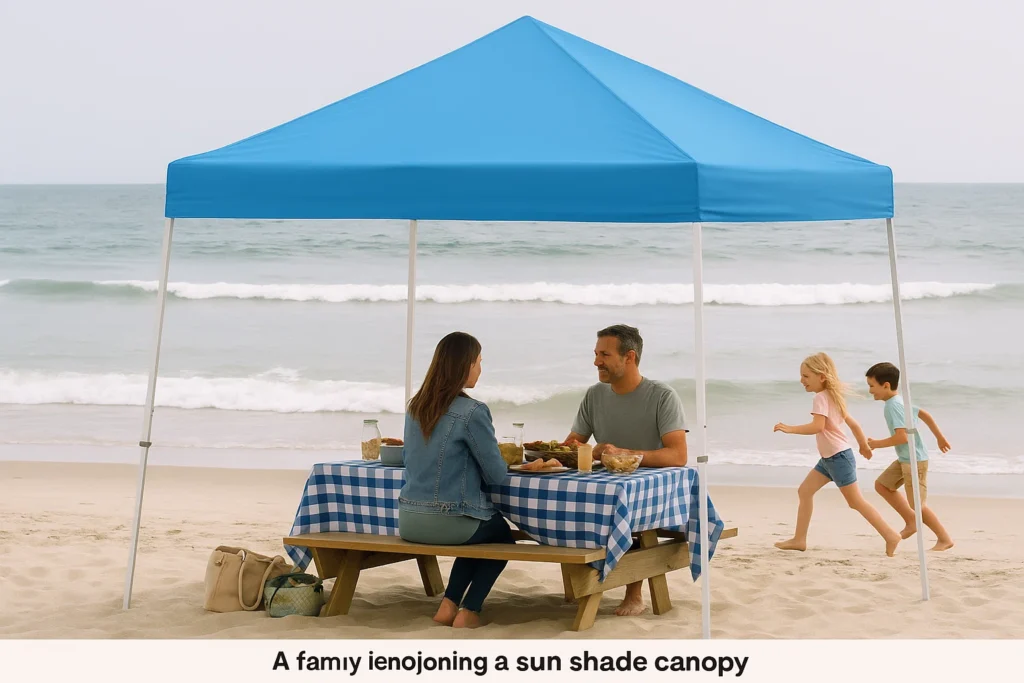
How to Customize a Canopy Tent
Customization turns your tent into a brand ambassador. Here’s what you can customize:
- Size: Common sizes include 10×10, 10×15, 10×20 ft.
- Frame: Choose between steel (cheaper, heavier) and aluminum (lighter, more durable).
- Roof and Sidewalls: Choose printed or plain, mesh, clear PVC, or solid options.
- Accessories: LED lights, banners, feather flags, table covers, and weight bags.
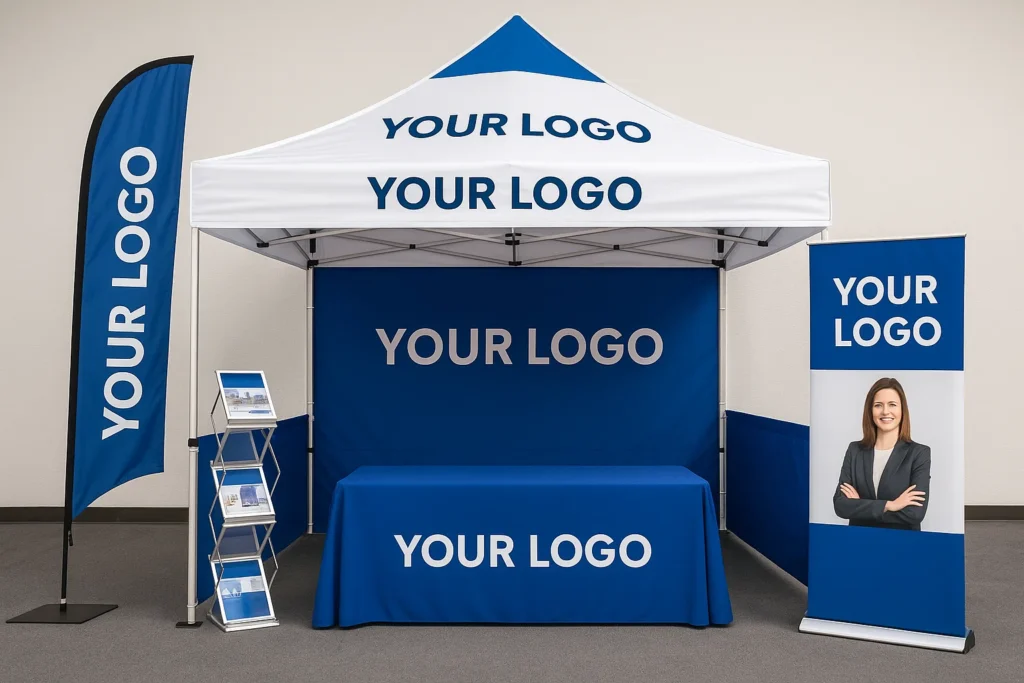
FAQs About Canopy Tents
Can one person set up a canopy tent?
Yes, especially if it’s a pop-up design. For best results, two people can set up a medium-sized tent (10×10 ft) in under 5 minutes.
Are canopy tents waterproof?
Most are water-resistant and can handle light rain. For heavier rain, look for models with waterproof fabric and reinforced seams.
How do I secure a canopy tent on hard surfaces?
Use weight bags filled with sand or water, or concrete anchors if permanent. Guy lines and crossbars also help in windy conditions.
Can I use a canopy tent indoors?
Absolutely. They’re often used at expos and conventions. Just make sure to check venue regulations for setup and weights.
For more frequently asked questions, visit our full FAQ page.
